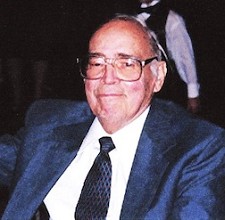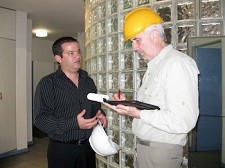Fastener Industry News Celebrates 35 Years

FEATURE
Editor’s Note: The following is the introduction of Fastener Industry News by founder and first editor/publisher Dick Callahan on the front page of the first issue of FIN.
July 10, 1979
RIDGEFIELD, CONNECTICUT – This being your first look at Fastener Industry News (FIN) you might be somewhat curious about the publication and the people behind it.
Let’s start off by introducing ourselves properly. FIN is a wholly-owned enterprise of Business Information Services, Inc., which also publishes (since 1973) a newsletter called Wire Industry News (WIN) as well as an annual called Directory of Wire Companies of North America. The publisher of FIN (and the president and owner of Business Information Services, Inc.) is also the publisher/editorial director of the magazines Wire Technology and Fastener Technology, which are published by Wire Technology, Inc. of Stamford, Conn. However, there is no corporate link between Business Information Services, Inc. and Wire Technology, Inc. Both are separate and independent enterprises with their own offices.
FIN will be a bi-weekly newsletter of eight pages and will begin its bi-weekly schedule with the issue of August 15, our next issue. Subscribers to the publication will be billed from that issue onwards. This one’s on us.
Besides providing news about companies and individuals in the fastener industry, we also plan to have several special issues each year on topics that warrant special attention as well as surveys on business conditions in the fastener industry. These will come as part of the regular subscription price.
We’ll keep you up to date with what’s happening but to do so we’ll need your help. We want you to write us or call us and fill us in about what you’re doing. Some of the large companies in the industry have regular public relations people to do that for them but we want to hear from the small companies too. If you have a mailing list for information about your company, add us to it.
We don’t claim to be experts in this field. We’re reporters. And like any neophyte we’re going to make mistakes. But we’re quick learners and we think we’ll have something of real value to contribute to this industry as we mature. That’s enough about us, let’s get started with the more important subject of what’s happening in the industry.
1999 FIN – Callahan’s Observations on the Changing Industry at the 20th Anniversary of FIN
Editor’s Note: To Mark the 20th anniversary of Fastener Industry News, the founder, first editor and first publisher, Dick Callahan, recalled his years from 1979 to 1994
By Dick Callahan
July 9, 1999 FIN – Twenty years ago, July 10, 1979, to be exact, my boss (and wife) Harriet and I started this biweekly newsletter, adding it to our other publications, including Wire Industry News (WIN) and Supplier Industry News (SIN).
Starting FIN in 1979 was not a great piece of timing on our part. Jimmy Carter was in his third year as the 39th president, there were distractions, such as the hostage situation in Iran, an energy crisis, record federal expenditures, an unsuccessful attempt to cut taxes and wrangling over the proposed return of the Panama Canal to Panama. Double-digit inflation and rising unemployment (reaching 7.8 million) resulted in a recession – the seventh since World War II – and the election of Ronald Reagan as president in 1980.
The early days of the Reagan years didn’t immediately alleviate the national “malaise” (Carter’s word). In late 1981 recession number eight came, with unemployment rising to 10 million.
The fastener industry’s business outlook, which generally walks lockstep with the general economy, was none too optimistic.
Despite the unpropitious economic climate in 1981, Mike McGuire decided to start the National Industrial Fastener Show & Conference in his hometown of Columbus, OH. Industry consensus was hardly sanguine. However, over the years the show grew, and the NIFS Hall of Fame and a western version were added.
The Chicago Bolt, But & Screw Association, unveiled its first tabletop show in 1982. The shows helped provide a salutary note of heightened expectation for the future; a hope realized when the economy began to expand in late 1982.
Though the latter years of the Reagan administration saw the stock market crash of October 19, 1987, when Dow Jones Industrial Average plummeted 508 points, the economy survived and unemployment dropped to 5.2% in 1988. Again fastener fortunes shadowed the general economy.
George H.W. Bush’s one-term tenure from 1989 to 1993 featured the war in the Persian Gulf, the Berlin Wall falling, the $200 billion savings & loan bailout, a shallow and short recession in 1990 and an ill-advised flip-flop on his “Read my lips, no new taxes” campaign vow.
For the fastener industry the Bush years brought the Fastener Quality Act and North American agreements eliminating trade barriers between Canada, Mexico and the U.S.
The 1990’s also saw consolidations – but bigger, as Goliath found out, is not necessarily better. While some families (let’s call them dynasties) have faded from the U.S. fastener business, there are a refreshing number still in play. A not-all-inclusive list is: the clans Branson, Broehm, Cohn, Cordova, Dorflinger, Endries, McIlhon, O’Donahue, Payne, Porteous, Revercomb, Sackheim, Stanley, Sullivan and Zehnder.
Just before FIN turned 15 and its original editor hit 65, we began receiving inquiries from a West Coast group about acquiring the newsletter. These messages, along with others from publications brokers, quickly hit the round file. We weren’t adverse to selling FIN but we wanted qualified people to take over.
When we eventually learned that the West Coast bidders were retired fastener importer Eric Cohn’s stepdaughter and son-in-law, it got our attention and we knew that our newsletter would be in good hands. John and Ann proved us right.
Looking ahead, FIN will be covering Y2K (how will computers cope with inventories and just-in-time scheduling); ramifications to world trade of the newly consolidated Europe (poised, we believe, to challenge the U.S. dollar with its “Euro” common currency as the world’s favorite reserve currency); an aggressive China determined to assert its primacy in the Pacific area; a new White House administration in 2001 and its business policies; the economy and stock market; and an industry becoming part of what McLuhan called a “global village.” International trade is an impending issue in another way with the 147 World Trade Organization countries currently looking for new leadership and direction.
Related Stories:
• MSC Direct Achieves Strong Sales Growth Despite “Soft Pricing”






There are no comments at the moment, do you want to add one?
Write a comment